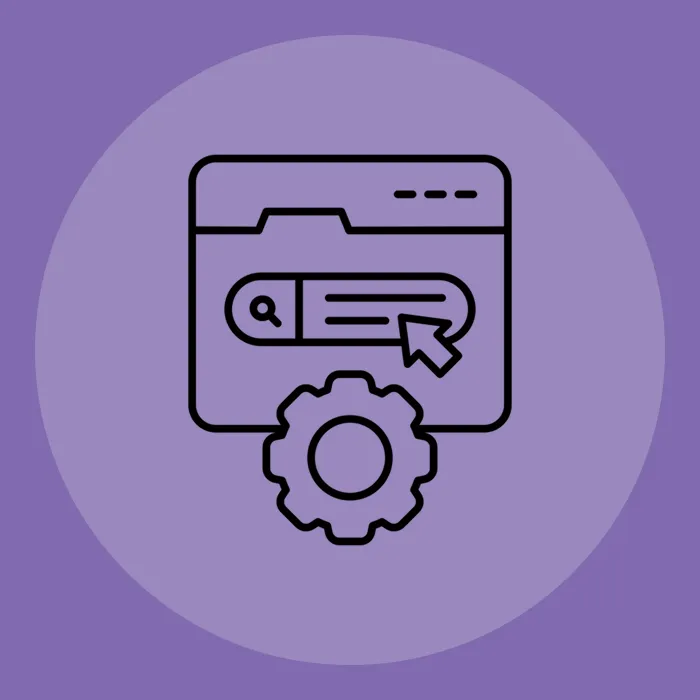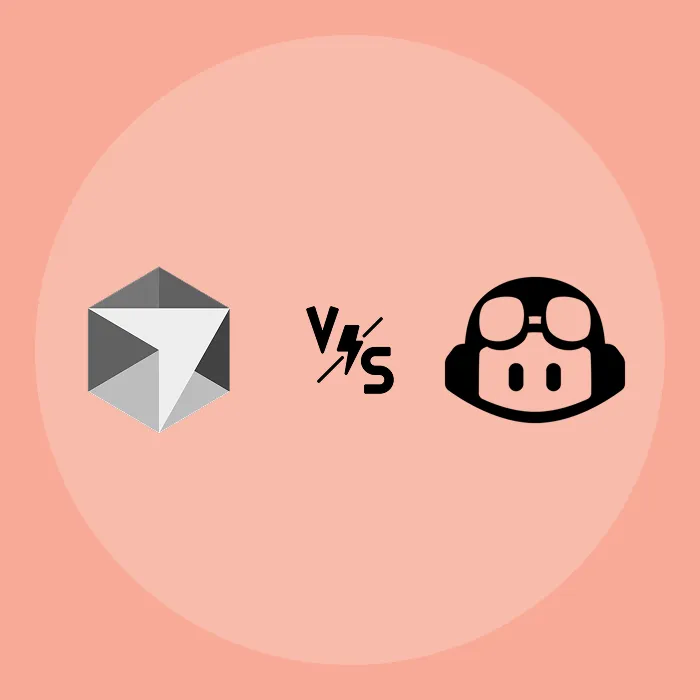Ever gotten an email with your name but suggesting products you'd never buy?
This happens even though 80% of customers buy more from brands offering personal experiences.
Many companies add a first name to generic content and call this "personalization," but this tactic does not improve results.
The gap between customer expectations and what marketers deliver keeps growing.
Marketing teams can't process data quickly enough while shoppers expect custom experiences everywhere.
Sound familiar? Without fixing this problem, you risk losing business to competitors who get their customer engagement right.
AI marketing personalization is changing everything. Companies using it see dramatic improvements in engagement and sales.
Want better marketing results? Let's make AI personalization work for your business.
The Business Value of AI-Powered Marketing Personalization
Marketing teams tend to see quick wins when they start using AI personalization in their campaigns.
These numbers show the real impact AI brings to marketing efforts.
AI personalization delivers measurable business results across key metrics.
Companies using advanced AI tools to write and personalise content as part of their marketing strategy see dramatic improvements compared to generic approaches.
The data speaks for itself.
Key performance improvements with AI personalization:
- Conversion rates increase across marketing channels
- Average order values grow with consistent personalization
- Customer lifetime value typically doubles for loyal customers
- Better targeting leads to improved return on marketing spend
- Customer acquisition becomes more cost-effective
The market reality is straightforward - customers feel annoyed when companies don't bother personalizing marketing messages.
Adding a first name to an email isn't enough anymore - shoppers want offers that match what they need right when they need it.
Brands slow to adopt this technology face tough challenges.
Those without AI personalization watch their marketing effectiveness decline as old tactics stop working.
Look at Spotify's Wrapped campaign - they turned boring listening data into personal stories users couldn't wait to share, generating millions of free social posts.
Sephora saw its basket size grow significantly after rolling out AI product recommendations.
What makes AI personalization truly valuable isn't just better sales numbers - it's solving the gap between what customers demand and what marketing teams can actually deliver when working with thousands or millions of contacts.
The reaction when someone receives perfectly matched recommendations creates the kind of customer loyalty that marketing budgets alone can't buy.
Understanding AI Marketing Personalization
Marketing personalization has come a long way from the basic "if-this-then-that" rules we used to rely on.
Today's AI systems use some pretty impressive technologies that work together to optimize customer experiences wherever they interact with your brand.
At the heart of AI marketing personalization, you'll find three main technologies:
- Machine Learning: Systems that figure out patterns in data without someone having to program every single rule
- Natural Language Processing: Tech that helps AI understand and create human language that sounds natural
- Predictive Analytics: Methods that look at past behavior to make educated guesses about what someone will do next
The big difference between old-school rule-based systems and true AI approaches? Adaptability.
Rule-based systems stick to rigid paths like "if a customer bought shoes, recommend socks."
These systems don't get smarter over time.
AI-driven approaches keep analyzing data, spotting hidden patterns, and tweaking their approach as customer behaviors shift.
When processing customer data, AI looks at thousands of factors at once - something no human team could manage manually.
An AI might pick up that customers browsing products after midnight respond differently than daytime shoppers, or that rainy weather triggers interest in certain product categories.
Different marketing channels need specialized AI approaches:
- Email platforms use smart models to personalize content and figure out when you're most likely to open messages
- Website engines watch click patterns to rearrange page elements while you're browsing
- Ad systems find new customers who behave similarly to your best current buyers
Real-time personalization has completely changed what marketers can achieve.
Modern systems personalize content almost instantly based on what you're doing right now.
Someone who adds items to their cart but hesitates might immediately see a message addressing their specific concerns.
Behavioral prediction isn't that complicated.
If someone reads several articles about social media marketing and downloads a related guide, the AI recognizes this pattern as a strong signal that they're interested in social media tools.
Getting Started With AI Personalization: A Step-by-Step Approach
Getting started with AI personalization doesn't have to be overwhelming.
Breaking the process into manageable steps helps marketing teams implement these powerful technologies systematically.
Let's walk through a practical approach that works for businesses at any stage of their AI journey.
Step 1: Audit Your Current Personalization Habits
Most marketing teams already use some form of personalization, but I've noticed few truly understand where they stand.
Before diving into AI solutions, take stock of what you're already doing.
Start by reviewing all customer touchpoints where you currently try to deliver personalized experiences.
Look at email marketing campaigns, website interactions, ad targeting, and customer service communications.
For each channel, document what data you're using and how sophisticated your personalization rules are.
Next, identify gaps where effective personalization could enhance marketing performance.
Look for high-friction points in the customer journey where personalized AI content creation could solve some problems.
Often, the biggest opportunities exist in areas with high traffic but low conversion rates.
Evaluate your data assets thoroughly.
Make a complete inventory of what customer information you have access to, where it's stored, and how complete and accurate it is.
Many companies are surprised to discover they have valuable data sitting unused.
When setting personalization goals, tie them directly to business objectives.
Instead of vague targets like "improve personalization," aim for specific outcomes such as
- "Increase product page conversion by 15%" or "reduce cart abandonment by 20%."
I've seen that common weak spots in personalization programs include siloed data that prevents a unified customer view, overreliance on demographic rather than behavioral data, and failure to use AI to enhance decision-making beyond basic rules.
Step 2: Decide What AI Personalisation Tools To Use
Creating an effective AI personalization system requires several key components.
At minimum, you'll need a customer data platform, an AI engine, and delivery systems across channels.
The market offers solutions for businesses of all sizes. I've seen how AI enables marketers to create experiences that were impossible before. Some standout platforms:
- Insider excels in retail with cross-channel capabilities that adapt to customer needs and preferences. Their system personalizes entire digital journeys for e-commerce brands.
- Braze works wonderfully for mobile-first businesses, with real-time engagement features responding instantly to app interactions.
- Dynamic Yield shines in retail and restaurants, using adaptive technology to personalize everything from layouts to recommendations.
When integrating new AI with existing technology, start with mapping your customer data flows between systems.
Budget constraints? Consider AI-enabled features within tools you already use.
Many platforms now include new AI recommendation engines.
Technical challenges typically involve data quality control.
The solution is usually a phased implementation rather than a complete overhaul.
I think AI is going to be like the gold rush—those who get in early will benefit most, while others scramble to catch up.
Step 3: Create an AI-Ready Data Strategy
The success of your AI personalization efforts depends entirely on your data foundation.
Unlike traditional marketing approaches, AI algorithms require diverse, clean data to generate meaningful insights about customer preferences.
Four essential data types power effective personalization:
- Demographic information (who your customers are)
- Behavioral data (what actions they take)
- Contextual data (circumstances of their interactions)
- Preference data (explicitly stated choices)
When collecting this information, always prioritize transparency.
Clearly communicate what data you're gathering and how it benefits customers.
Use progressive profiling instead of demanding everything up front.
Creating unified customer profiles requires connecting identifiers across platforms.
Consider implementing a customer data platform (CDP) that can stitch together anonymous and known user behaviors into cohesive profiles.
Data quality issues often undermine AI effectiveness.
Use validation rules at collection points, regular cleaning processes, and scoring systems to flag low-confidence data.
For privacy compliance, maintain a living document tracking what personal data you collect, where it's stored, and your legal basis for processing it under GDPR and CCPA.
When facing data gaps, consider enrichment from third-party providers or inference models that can estimate missing values based on similar customer segments.
Real-World AI Personalization Strategies That Work
Let's move beyond theory and explore proven AI personalization strategies that deliver measurable results across different touchpoints.
Smart brands tailor content based on real-time signals rather than static segments.
The most effective approach combines behavioral data with contextual factors like device type, time of day, and browsing history.
For example, showing different homepage banners to returning visitors based on previously viewed categories increases engagement significantly.
| Strategy | Best Use Cases | Key Benefits |
| Dynamic Content | Email campaigns, Website hero sections, App screens | 30% higher engagement, Improved time-on-site |
| Predictive Recommendations | Product pages, Post-purchase emails, Abandoned cart recovery | 25% larger order values, Higher repeat purchases |
| Journey Optimization | Multi-touchpoint campaigns, Onboarding sequences | Reduced drop-offs, Faster conversion paths |
| Next-Best-Action | Service follow-ups, Cross-sell opportunities | Better customer experience, Higher lifetime value |
Leading companies are using AI to map and optimize entire customer journeys, not just individual interactions.
By analyzing thousands of journey patterns, AI can identify which sequences of touchpoints lead to conversion and which create friction.
The next-best-action approach uses AI to determine the optimal next step for each customer.
Rather than pushing the same offer to everyone, the system might recommend different actions—send a discount, suggest complementary products, or provide educational content—depending on where each person is in their decision process.
Personalized copy creation has become one of the most powerful use cases for AI.
Systems can generate thousands of variations of product descriptions, email subject lines, and ad copy tailored to specific customer segments.
AI helps prevent retargeting fatigue by optimizing frequency, timing, and creative elements based on individual response patterns.
Measuring Success: Key Metrics for AI Personalization
Marketers quickly realize traditional metrics aren't enough when tracking AI personalization results.
Looking deeper reveals what's working at each touchpoint.
The essential KPIs that actually matter include:
| Metric Category | Key Metrics to Track |
| Engagement | Time on site, Pages per sessionReturn frequency |
| Conversion | Conversion rate by segmentCart abandonment reduction |
| Revenue | Average order valueCustomer lifetime value |
| Efficiency | Cost per acquisitionCampaign resource requirements |
Attribution gets tricky with personalization because customer journeys aren't straightforward anymore.
Multi-touch attribution models work best since they can customize credit across touchpoints based on their real influence on conversions.
A/B testing is still super important, but needs to evolve.
Creating proper control groups that get zero personalization helps measure the true lift from powerful AI implementations.
When showing ROI to leadership teams, focus on business outcomes they care about.
Nobody wants to hear about algorithm improvements – they want to see revenue increases, cost reductions, or better customer retention.
For tracking tools, platforms like Insider connect data across channels, while Mixpanel helps dig into user behavior patterns.
The right tool depends on what you're selling and which channels matter most to your business.
Future Trends in AI Marketing Personalization
AI is changing how brands talk to customers in ways that were total sci-fi not long ago.
Here's what's coming next:
- AI that keeps your data on your device instead of shipping it off to tech giants
- Systems that notice when you're frustrated with a website and adapt accordingly
- Voice search becoming a big deal as more shoppers talk to their smart speakers
- Visual search letting you snap a photo to find products you want
- Predictive tech that figures out what you need before you do (feels a bit weird but works)
- Personalization that follows you from your phone to laptop to physical shops
Brands using these tools properly will stop bombarding people with stuff they don't care about.
Companies that nail this will see amazing results, while others will scratch their heads wondering why nobody's converting.
The real challenge?
Finding that balance between helpful personalization and coming off like you're stalking your customers.
Conclusion
AI makes personalization a game-changer for marketing teams that get it right. Companies clinging to old-school "Dear " tactics are quickly falling behind.
Don't try to transform everything overnight. Start with one channel where you have good data and align it with your business needs.
Maybe it's smarter email sequences or product recommendations that don't suggest dog food to cat owners.
The competitive gap is widening fast. Brands using AI to personalize experiences are seeing conversion rates 2-3x higher than those still batch-and-blasting.
Ready to start? Audit what you're doing now, pick a high-impact opportunity, and build from there.
The tech is impressive, but don't forget that robots can't replace human creativity—they just give it superpowers.
Your customers want personalization that feels helpful, not creepy. Find that balance.
FAQs
What's the difference between traditional and AI-powered personalization?
Traditional personalization uses fixed rules like "if a customer buys shoes, show socks," and doesn't adapt. AI personalization analyzes thousands of data points, spots hidden patterns, and gets smarter with each interaction.
AI can process way more variables than any human team could manage and adjust in real-time based on what customers are doing.
How much data do I need before implementing AI personalization?
You need enough data to identify patterns - typically 3-6 months of customer interactions. Start with what you have rather than waiting for perfect data.
I began with just basic website tracking and email engagement metrics. Focus on quality over quantity - clean data about 1,000 customers beats messy data from 100,000.
What privacy concerns should I address with AI personalization?
Be transparent about what data you're collecting and how it benefits customers.
Create a document tracking what personal data you store and your legal basis for processing it under GDPR and CCPA. Use progressive profiling instead of demanding everything up front. Find that sweet spot between helpful personalization and digital stalking.
Can small businesses effectively use AI for personalization?
Absolutely! Small businesses can start with AI features built into tools they already use.
Many email platforms now include AI recommendation engines and smart segmentation. Focus on one channel where you have good data first, then expand as you see results.
How long does it typically take to see ROI from AI personalization?
Most businesses see initial results within 2-3 months, with full ROI coming after 6 months of optimization.
Start with high-impact touchpoints like product recommendations or abandoned cart sequences to get quick wins. Track improvements in engagement metrics before revenue gains become clear.
How do I convince my leadership team to invest in AI personalization?
Focus on business outcomes they care about - revenue increases, cost reductions, or better customer retention. Skip the tech talk about algorithms and show how competitors using AI see conversion rates 2-3x higher. Start small with a proof-of-concept in one channel to demonstrate value before scaling.
About author
Raife is a AI marketing and content creator, helping creators and solopreneurs build effective systems using AI and automation tools, sharing practical insights on AI, automation, and SEO/content marketing.









